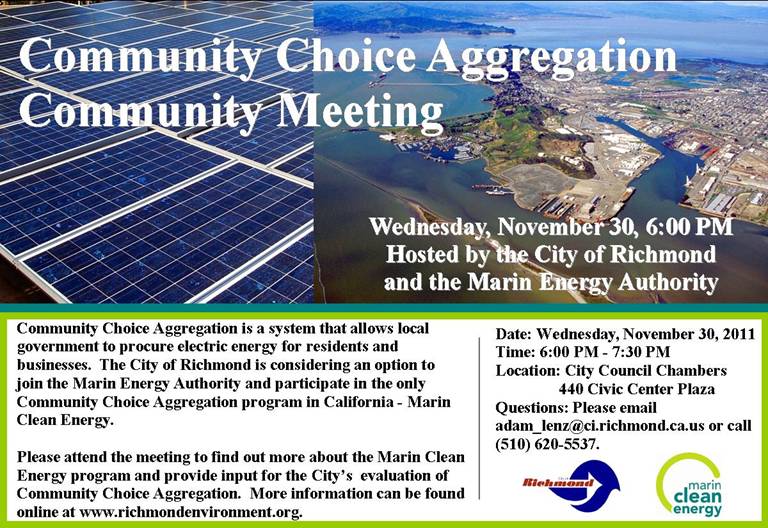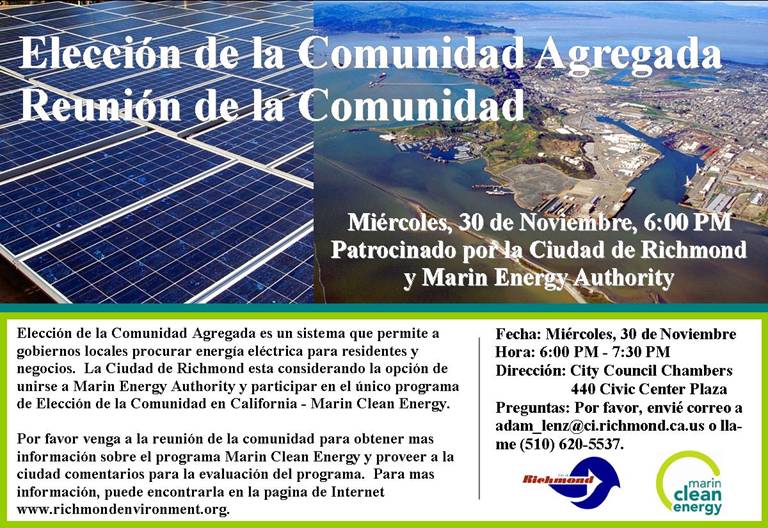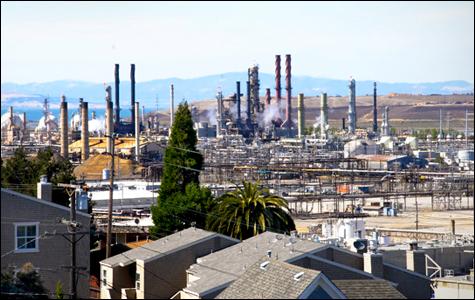I have been a cheerleader for the Community Choice Aggregation movement far about 10 years. I am very excited that the majority of City Council members has supported moving forward to join the first Community Choice Aggregation project in the state, the Marin Clean Energy Authority.
People who oppose this try to make it complicated and scary. It’s really very simple. If we were to join, this is how it works:
- The Marin Clean Energy Authority purchases power from clean, renewable sources, and PG&E delivers it to your home or business through their distribution system and wires. It’s that simple.
- PG&E sends your monthly bill and provides customer service. And those repair and maintenance teams in the familiar blue PG&E trucks continue to provide the same reliable service you’re used to – rain or shine.
- Marin Clean Energy's affordable rates are set locally by local representatives to reflect our local energy needs, our geography and our climate.
- Currently, there is a choice. Light Green 27% clean, renewable power comes from sources like solar, wind, geothermal, hydro and biomass. That’s almost twice the amount of renewable energy that PG&E provides.
- For customers whose commitment to clean energy and a clean environment run even stronger, Marin Clean Energy offers Deep Green 100% renewable energy.
- It’s already working. Going forward, we will see an average annual reduction of 68,595 tons of greenhouse gas emissions per year - that's the equivalent of taking 12,000 cars off the road every year!
- As Marin Clean Energy grows, the plan is to tap into and develop renewable energy sources closer to home, including in Richmond.
- Since the start up of Marin Clean Energy, costs of power for subscribers has been comparable to or lower than PG&E.
- Any customer has a right not to participate. Customers will receive at least 4 notices informing them of their pending enrollment and right to opt-out beginning 3 months prior to their enrollment.
If you have questions, please go to the Community Choice Aggregation Meeting, Wednesday, November 30th
The City of Richmond and Marin Energy Authority will host a community meeting to inform all Richmond residents and community members about the City’s interest in Community Choice Aggregation.
Community Choice Aggregation is a system that allows local governments to procure electric energy for residents and businesses. The City is considering an option to join the Marin Energy Authority and participate in the only Community Choice Aggregation program in California: Marin Clean Energy. Marin Clean Energy provides 27% renewable energy, over 10% more than PG&E provides, at comparable rates.
Please consider attending the meeting to find out more about the Marin Clean Energy Program and provide input for the City’s evaluation of participating in Community Choice Aggregation. The meeting will take place in the Richmond City Council Chambers at 440 Civic Center Plaza on Wednesday, November 30, 2011, from 6:00 PM – 7:30 PM. Please RSVP at: http://ccacommunityworkshop.eventbrite.com. More information about Community Choice Aggregation including staff reports and past presentations can be found at: www.richmondenvironment.org.

La Ciudad de Richmond y Marin Energy Authority patrocinarán una reunión de la comunidad para informar a residentes y miembros de la comunidad sobre el interés de la Ciudad de Elección de la Comunidad Agregada.
Elección de la Comunidad Agregada es un sistema que permite a gobiernos locales procurar energía eléctrica para residentes y negocios. La Ciudad de Richmond esta considerando la opción de unirse a Marin Energy Authority y participar en el único programa de Elección de la Comunidad en California - Marin Clean Energy. Marin Clean Energy aporta el 27% de energía renovable, mas el 10% mas que PG&E ofrece, a precios comparables.
Por favor venga a la reunión de la comunidad para obtener mas información sobre el programa Marin Clean Energy y proveer a la Ciudad comentarios para la evaluación del programa. La reunión comenzará a las 6 de la noche y será en el City Council Chambers (440 Civic Center Plaza). Para más información, incluyendo reportes y presentaciones pasadas, puede encontrarlos en la página de Internet www.richmondenvironment.org.

Climate Change Warnings Heat Up
Two leading agencies say we must curb emissions now to avoid catastrophic warming.
By Susanne Rust

click to enlarge 
- Maya Sugarman
- Chevron's Richmond refinery is one of the largest producers of greenhouse gases in the state.
California Watch is a project of the nonprofit Center for Investigative Reporting in Berkeley. Contact the author at SRust@CaliforniaWatch.org. For more, visit CaliforniaWatch.org.
As the federal government released its annual index of greenhouse gases this month, showing a steady increase over the past 21 years, the International Energy Agency warned that we are on the path to 11-degree warming if we don't curb emissions now. "Delaying action is a false economy: For every $1 of investment in cleaner technology that is avoided in the power sector before 2020, an additional $4.30 would be needed to be spent after 2020 to compensate for the increased emissions," the authors of the energy agency report wrote in their 2011 World Energy Outlook.
Earlier this month, the National Oceanic and Atmospheric Administration released its annual accounting of greenhouse gases in the atmosphere. The index showed a 29 percent increase over levels recorded in 1990, the agency's baseline year, as established by the Kyoto protocol. "The increasing amounts of long-lived greenhouse gases in our atmosphere indicate that climate change is an issue society will be dealing with for a long time," said Jim Butler, director of the Global Monitoring Division of NOAA's Earth System Research Laboratory in Boulder, Colorado.
Butler said you have to think of this number not as a predictor, but more like a dial on an electric blanket. You know that if you turn the dial up, the blanket will get warmer. You may not feel the warmth immediately, but it will get warmer — just how warm, you don't know.
One of the more striking findings in the agency's report includes the increase in methane found in the atmosphere. The level of that gas has increased in the last four years, after holding steady for more than a decade. Methane is 25 times more potent than carbon dioxide as a greenhouse gas.
Butler said that increase is likely attributable to the thawing of permafrost and an increase of methane escaping from tropical areas. "Climate warming has the potential to affect most aspects of society, including water supplies, agriculture, ecosystems, and economies," said Butler, who added that his agency will continue to monitor these gases "into the future to further understand the impacts on our planet."
His warning was echoed by the International Energy Agency, which said "rising fossil energy use will lead to irreversible and potentially catastrophic climate change."
Joe Romm, former assistant secretary in the US Department of Energy and now editor of the blog Climate Progress, said the International Energy Agency "is one of the few organizations in the world with a sophisticated enough global energy model to do credible ... projections of the cost of different emissions pathways and the costs of delaying efforts to achieve them."
He said the key point of the report is that in the 2020s, "the world is going to be considerably more desperate than we are now. The evidence of human-caused climate change will be difficult for all but the most extreme deniers to ignore."
He added that superstorms, like the one in Alaska earlier this month, "will increasingly just be the normal weather — and we'll start to see what really extreme weather is like."



